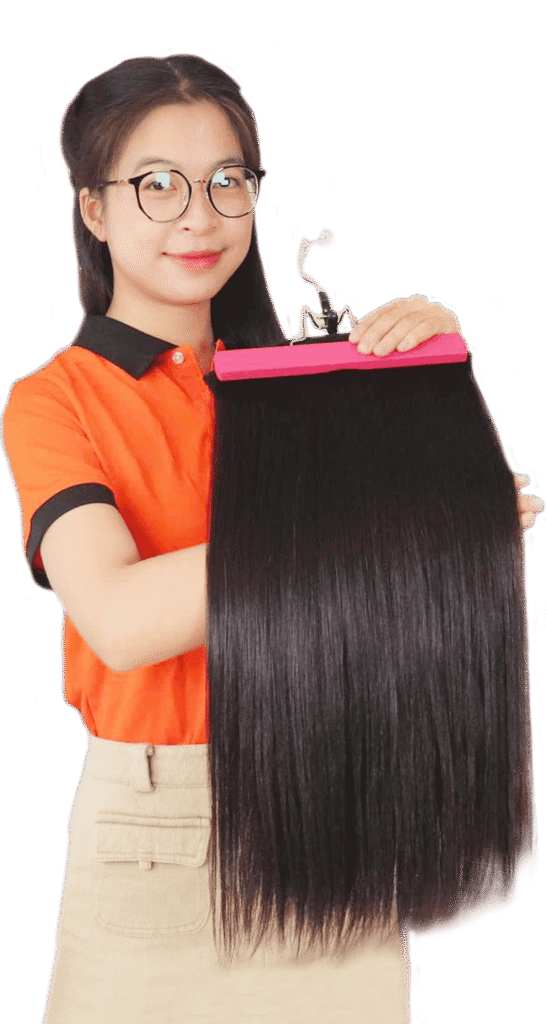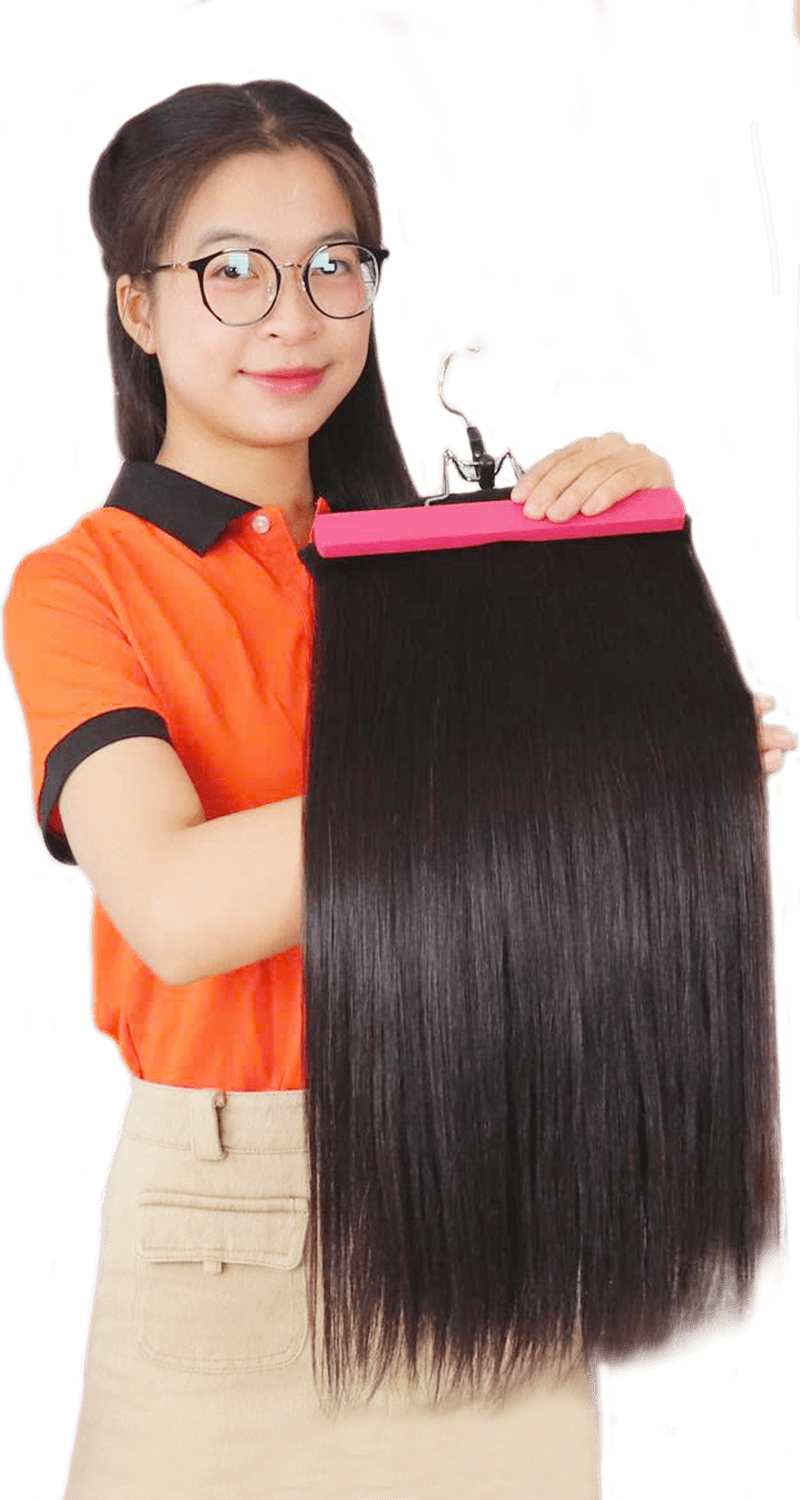Curly hair, with all its natural beauty, can also come with its fair share of challenges – and one of the most common among them is dealing with tangles. If you’re a proud owner of curly locks, you’ve probably experienced the seemingly endless battle of detangling your hair at some point. But fear not, because, in this comprehensive guide, we’re going to unravel the mystery of how to detangle curly hair with ease and grace. Whether you have tight coils, loose waves, or anything in between, we’ve got you covered.
I. Detangle For Curly Hair: Why is My Curly Hair So Tangled?
First things first. Why does curly hair get so tangled, anyway? You may have hair envy when you see fellow straight or wavy-haired girls with hair that doesn’t tangle so easily, and you may wish you could easily comb through your hair throughout the day. Well, curly hair is undeniably beautiful, but it also has a unique tendency to become tangled and knotted more easily than straight hair. If you’ve ever wondered why your curly locks seem to have a mind of their own when it comes to tangling, there are several reasons behind it:

- Texture and Structure: Curly hair is naturally more textured and has a coarser cuticle layer than straight hair. This makes it more prone to interlocking and forming knots.
- Dryness: Curly hair often lacks the natural oils that straight hair benefits from. This dryness can cause individual strands to become more brittle, making them more likely to break and form knots.
- Friction and Movement: The friction between curly hair strands, especially when they rub against clothing or accessories, can lead to tangles. Additionally, the constant movement of curls can exacerbate this issue.
- Lack of Proper Care: Not using the right haircare products and techniques for curly hair can exacerbate tangling. Curly hair requires specific care to maintain its health and prevent knots.
- Frequent Washing: Overwashing curly hair can strip it of its natural oils, making it more prone to tangles. It’s essential to find a washing frequency that works best for your specific hair type.
Understanding why your curly hair tangles is the first step in managing and preventing it. With the right care routine, products, and techniques, you can enjoy your gorgeous curls without the hassle of constant knots and tangles.
II. Detangle For Curly Hair: Is It Better To Detangle Wet or Dry Hair?
Detangling curly hair can be a delicate process, and whether you should do it on wet or dry hair depends on several factors, including your hair type, condition, and personal preference. Both wet and dry detangling methods have their advantages and drawbacks, so let’s explore each option:

1. For Wet Hair
Advantages:
- Less Friction: Wet hair tends to have less friction, making it easier to glide a detangling tool (like a wide-tooth comb or a detangling brush) through your curls without causing breakage.
- Enhanced Product Penetration: If you use a detangling conditioner or leave-in conditioner, wet hair allows better product distribution and absorption.
Drawbacks:
- Fragility: Hair is more fragile when wet, so it requires gentle handling to avoid damage.
- Time-Consuming: Wet detangling can take more time as you have to wash and condition your hair first.
2. For Dry Hair
Advantages:
- Less Fragile: Dry hair is less prone to breakage compared to wet hair.
- Quick: Dry detangling can be quicker since you don’t have to wait for your hair to dry.
Drawbacks:
- More Friction: Dry hair has more friction, which can lead to more resistance when combing, potentially causing damage or breakage.
- Less Product Absorption: You won’t benefit from the enhanced product penetration that wet hair provides.
Ultimately, the choice between wet and dry detangling depends on what works best for your hair and your detangling preferences. Whether you choose wet or dry detangling, the key is to be patient, gentle, and use the right tools and products designed for your hair type. We usually recommend that your hair at least be damp or wet when detangling, and to use the right hair products to assist with the detangling process.
III. Detangle For Curly Hair: 4 Easy Steps to Have Fabulous Curl
Detangling curly hair can be a bit of a chore, but with the right techniques and products, you can make the process much smoother and gentler on your curls. You can detangle your curly hair extensions using the same method above. Here’s a step-by-step guide on how to detangle curly hair effectively:
Detangle For Curly Hair #1: Prepare Your Hair
Start with freshly washed hair or dampen your hair with water using a spray bottle if you’re detangling between wash days. Then apply a generous amount of a moisturizing conditioner or a detangling product to your hair. This will provide slip and make it easier to detangle.
Divide your hair into manageable sections. This makes the detangling process more organized and less overwhelming. Use hair clips or hair ties to secure the sections you’re not working on.
#2: Detangle Each Section
Begin with one section at a time, starting from the tips and working your way up to the roots. Use your fingers or a wide-tooth comb, whichever you prefer and find the most gentle on your hair. Gently separate any knots or tangles with your fingers, working through them patiently. Do not yank or pull on your hair, as this can lead to breakage. Take your time with each section. Rushing through the process can cause more damage and breakage.
Detangle For Curly Hair #3: Rinse or Leave-In
- If you’re in the shower, continue to rinse out the conditioner or detangling product as you finish each section.
- If you’re detangling outside of the shower, you can choose to leave some of the product in your hair for added moisture and protection.
#4: Additional Tips
- Use a detangling brush specifically designed for curly hair, as it can help distribute the product evenly and detangle more efficiently.
- If your hair is severely tangled, you’ll need to bring in the big guns like coconut oil or shea butter and finger detangle first, before moving on to using a brush to get smaller knots out.
- Detangle your hair when it’s well-conditioned, as this reduces friction and minimizes damage.
- Consider using a silk or satin pillowcase to prevent overnight tangling.
- If you encounter a particularly stubborn knot, apply a bit more conditioner or detangling product and gently work it out with your fingers or comb.
→ Remember that consistent, gentle care is essential for maintaining the health and appearance of your curly hair. If you’re struggling with persistent tangles, you might want to evaluate your hair care products and routine to ensure they are suitable for your specific curl type and needs. Additionally, regular trims can help prevent split ends and reduce tangling.
IV. Conclusion
We hope that after following the journey where we delve into the world of curly hair care. With expert tips, product recommendations, and step-by-step instructions that we reveal can help you achieve the hair of your dreams. Say goodbye to frustration and hello to fabulous, detangled curls that are ready to shine.


 BEST SELLING PRODUCTS
BEST SELLING PRODUCTS Wig Hair
Wig Hair WHOLESALE
WHOLESALE Contact us
Contact us Sale Events
Sale Events
